While ordinary mortals are currently heading off on holiday, US Secretary of State Antony Blinken’s latest foreign visit is anything but relaxing. On his Asia tour, he will visit six countries in ten days. Almost more interesting than his destinations – Laos, Vietnam, Japan, the Philippines, Singapore and Mongolia – is where he is not going. Blinken skips China. And this in a week in which China has possibly facilitated an agreement between the bitter enemies Hamas and Fatah and receives the Ukrainian foreign minister for peace talks – in other words, it is fulfilling its role as a force for peace and counterpart to the USA with ever greater clout.
As Michael Radunski writes, Blinken’s trip also shows that the US Democrats are pursuing their policy in the region hand in hand with their partners – in stark contrast to the Republicans under Donald Trump: “America first” always means “allies last.” Read our analysis to find out exactly what the US delegation plans in which country.
Another conflict is emerging in research. The new giant accelerator at the CERN nuclear research center, which could be operational from the mid-2040s and will cost at least 15 billion euros, is already getting competition. It is becoming increasingly likely that China will soon want to build a similar system – and “soon” may be as early as the 2030s. Ralf Nestler has analyzed what this means for the strategy of European science and what risks researchers see on the horizon.

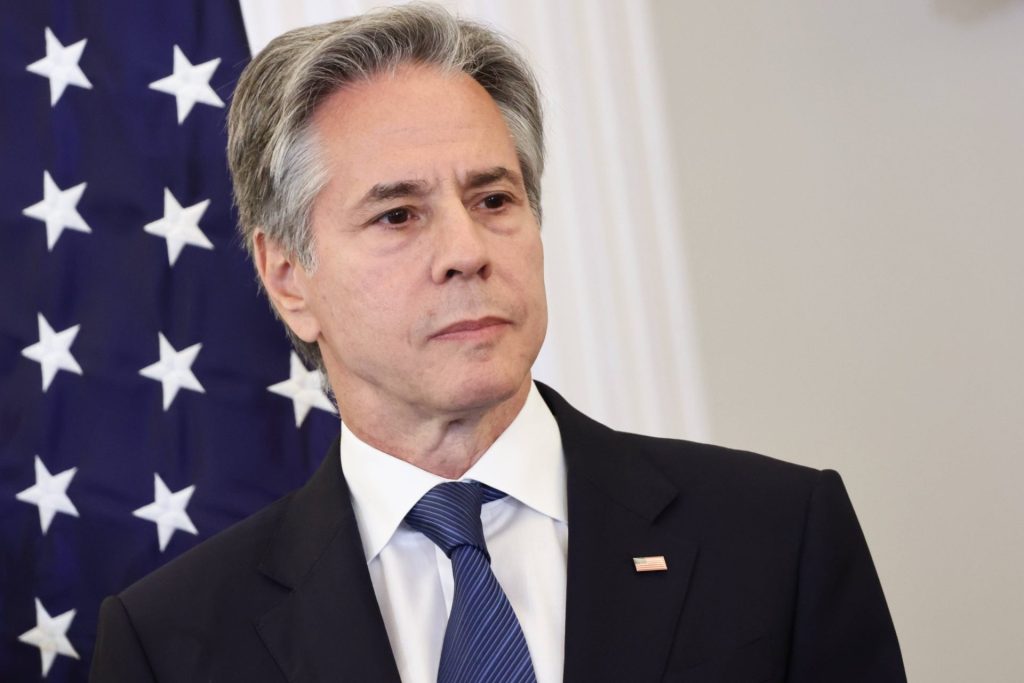
US Secretary of State Antony Blinken and US Secretary of Defense Lloyd Austin will travel to Asia this week. It will be Blinken’s longest Asia trip and the program is tight: six countries in ten days. Laos, Vietnam, Japan, the Philippines, Singapore and Mongolia.
Not only is the itinerary ambitious, but it also reflects the Democrats’ China policy: Together with allies and partners, they want to stand up to their great rival, China. This approach is also fundamentally different from that of the Republicans under Donald Trump. The latter hopes to negotiate a deal through direct dialogue, and allies sometimes fall by the wayside.
“We’ve prioritized creating a latticework of mutually reinforcing relationships,” says Daniel Kritenbrink, Assistant Secretary for East Asian and Pacific Affairs. The message is clear: The USA is going ‘all-in in the Indo-Pacific’ – side by side with its partners.
Numerous governments in Asia have recently expressed concern about Donald Trump’s possible election victory and the implications for America’s Asia policy. Trump openly questions the value of US alliances around the world. In his first term as president, he also proposed reducing the US military presence in Japan and South Korea or ending it altogether.
When asked last week whether he would support Taiwan in the event of a Chinese attack, Trump replied: “I think Taiwan should pay us for defense. You know, we’re no different than an insurance company. Taiwan doesn’t give us anything.” In contrast, Trump praised Chinese party and state leader Xi Jinping as a “brilliant man” at the beginning of the week.
It is Trump’s policy of “America First” and, above all, the implicit “ally last” that strengthens China’s position in the Indo-Pacific states. No government will dare to oppose China’s firm behavior if its most important ally negotiates its own deal with Beijing in a few months.
Accordingly, Blinken and Austin want to make a counterpoint with their trips. “We do try to reassure allies and partners that there are certain fundamentals I think about America’s engagement that are not going to change,” said Kritenbrink.
Vietnam is a good example of how important this approach is. Deputy Secretary of State Kurt Campbell appropriately refers to Vietnam as an Indo-Pacific “swing state” – analogous to the swing states in the upcoming US presidential election. Just as these states will be decisive in November, support for Vietnam will play an important role in the rivalry between the USA and China.
And so it is hardly surprising that Wang Huning will also be in Vietnam around the same time. He is the fourth highest-ranking member of the Standing Committee of the Politburo of the Communist Party of China. Incidentally, the official occasion for the visit is the funeral of Nguyen Phu Trong, the General Secretary of the ruling Communist Party of Vietnam.
In line with the trip’s main goal, the itinerary for the next few days is packed:
Mira Rapp-Hooper, Senior Director of the National Security Council for East Asia and Oceania, summarized this week: The aim is to create a new regional architecture to arm the Indo-Pacific against all kinds of challenges, from climate change to North Korea. From the perspective of the government in Washington, however, the biggest challenge is China.

Europe’s particle physicists are faced with a dilemma. They plan a giant accelerator at the CERN nuclear research center, which could be operational by the mid-2040s. However, the machine called FCC (Future Circular Collider) will cost at least 15 billion euros. Funding has not yet been secured. There are also growing indications that China is planning to build a similar facility in the near future and will beat the FCC to the punch. The Circular Electron Positron Collider (CEPC) could be ready for use as early as the mid-2030s and, above all, open to European researchers, at least as things stand at present. Should they seize the opportunity and save the money for the FCC?
The LHC (Large Hadron Collider) accelerator is currently in operation at CERN, which was used to discover the long-sought Higgs particle for the first time in 2012. With each test, the researchers learn more about its properties and refine their theories about the forces that keep the universe running. In the long term, they hope to have a more powerful machine. It will provide more data and possibly hints at “new physics.”
Stronger means bigger. Instead of 28 kilometers, which is the circumference of the ring-shaped LHC, the equally ring-shaped FCC requires 91 kilometers. The technical feasibility has been examined since 2021, as has the geological feasibility, given that the FCC would also be built in underground tubes. The cost estimate so far is only ballpark and stands at 15.5 billion euros. This cannot be funded from the current CERN budget, as the LHC’s research operations will continue from 2029 at a higher performance level, for which preparations are already underway.
The FCC needs additional sources of funding. There is talk of involving Switzerland and France more, as these countries benefit more from the construction – through contracts with regional companies. Another option would be for countries without CERN membership to share in the costs if they conduct research with the FCC. The USA and Japan in particular are being considered here.
“The CERN management must now clarify how the funding can be solidly secured,” says Lutz Feld from RWTH Aachen University and Chairman of the Committee for Elementary Particle Physics, which represents the German research community. It has been aware of the reluctance of the German Ministry of Education and Research and is understandable from its point of view: “As a taxpayer, I expect that investments are only made in projects whose funding has been clarified.” Feld adds that Cern has shown several times that it “is capable of such huge projects.” During the construction of the previous accelerators, “time and cost plans were adhered to.”
China has been accelerating its scientific advancement for years. This includes ideas for a large accelerator, which is also being designed as a “Higgs machine.” Now, it looks like things are getting serious. According to a Nature report, the 100-kilometer-long CEPC could be included in the next five-year plan in 2025. If the government agrees, construction could commence in 2027 and research could begin in 2035.
Such research facilities are high-tech devices at the limits of what is feasible and correspondingly attractive. After all, they produce important innovations “on the side,” such as superconductor technology, which conducts electricity almost without loss. Doubts about whether China could build such a top machine are fading. “I believe they can,” says Karl Jakobs from the University of Freiburg, who is a member of the CEPC’s International Advisory Committee and is very familiar with the concept.
The development in China and the results of the FCC feasibility study require an update to the European Strategy for Particle Physics. In 2020, relevant experts recommended building a “Higgs machine” as a successor to the LHC. Based on the new information, the experts will now consult again. “It will be very exciting,” says Jakobs, who chairs the committee. It could be that they stick with the FCC. “But it could also be that – if China builds the CEPC – CERN will be advised to shift its focus.” There are various concepts for alternative devices, including a linear accelerator called CLIC. The vote is expected to be available in two years.
Lutz Feld warns against relying solely on the Chinese accelerator. “What do we do if the Chinese government suddenly decides that no more data will be released?” he asks. “Or if China invades Taiwan and none of us can access the detectors because of the political consequences?” He says that as a scientist, he needs to be able to check the CEPC’s measurements to trust them.
Skepticism about China is widespread in the European community. According to one physicist, hardly any scientists move to the country to build a career there. You have to be very careful, they tell you that almost every day at university, says another. The international and open cooperation cultivated at CERN can hardly be imagined in China.
However, the researchers must ask themselves whether this is enough of an argument to insist on the FCC. After all, it comes with a staggering price tag, which will probably be revised upwards. Particle physicists and other basic researchers could do a lot with the money.
However, one thing to note about the decision is Europe’s leading role at CERN, both scientifically and regarding technology development. “It would be wise to retain it,” says Hans Peter Beck, a particle physicist at the University of Bern and CERN. Especially as he sees the geopolitical risk of a new ice age – regarding Russia and China; even in the USA, researchers from certain countries find it difficult to enter the country. “We physicists can only make suggestions; it’s up to politicians and society to decide what to do.”
August 1, 2024; 4 p.m. CEST (10 p.m. Beijing time)
Center for Strategic & International Studies, Webcast: Nuclear Threats and the Role of Allies: A Conversation with Acting Assistant Secretary Vipin Narang More
August 1, 2024; 5 p.m. CEST (11 p.m. Beijing time)
China.Table Toolbox / CNBW Berlin Naehkaestle, conversation (hybrid): Michael Kahn-Ackermann: Changes in Chinese society after Covid More
August 2, 2024; 8:30 a.m. Beijing time
German Chamber of Commerce – East China, Networking (in Shanghai): Executive Women in German Companies in China – WE.C.U. with Miriam Wickertsheim More
Russia and China have demonstrated a new presence in the North Pacific and the Arctic near the US border with joint flights of strategic long-range bombers. Russian Tu-95MS bombers and Chinese Xian H-6 bombers participated in patrol flights over the Chukchi Sea, the Bering Sea and the North Pacific, the Russian Ministry of Defense announced on Thursday. During the five-hour flight, the crews worked together in all phases. According to a Chinese Ministry of Defense spokesperson, the joint patrol had deepened mutual trust and coordination between the two sides. It had “nothing to do with the current international and regional situation.”
Russia has stated that no foreign airspace was violated. Nevertheless, the flight near the US state of Alaska prompted the USA and Canada to deploy fighter jets. The US and Canadian joint North American Aerospace Defense Command (NORAD) announced that fighter jets had intercepted the Russian and Chinese aircraft in the Alaskan airspace surveillance zone (Adiz), in which aircraft are required to identify themselves. The Russian and Chinese aircraft had remained in international airspace and the incident was not considered a threat. However, NORAD stated that it would continue to monitor activities in the vicinity of North America and “meet presence with presence.”
Russia and China have strengthened their military and economic cooperation in recent years. Just a few days before Russia launched its war of aggression against Ukraine in February 2022, the two countries announced that they would further strengthen their partnership, calling it borderless. Just recently, China and Russia held a joint naval exercise in the South China Sea. rtr
After years of speculation about a sale, Merck is parting with its pigments business. The German pharmaceutical and technology group announced on Thursday that it will sell the business to the Chinese manufacturer Global New Material International (GNMI) for 665 million euros. GNMI has assured the employees in Germany of extensive job guarantees and a guarantee for the plant in Gernsheim until 2032. The group intends to invest the proceeds from the sale in its core businesses.
Rumors about a sale of the pigments business, which operates under the name Surface Solutions, have been going on for several years. However, past attempts to sell the business failed during the pandemic. GNMI was last rumored to be an interested party. At the time, an agency report stated that the pigments business could be valued at almost one billion euros in the event of a deal.
Merck’s pigments business, which offers products for coatings, cosmetics and industrial applications, generated sales of 411 million euros last year. Overall, the company’s consolidated sales totaled just under 21 billion euros. The approximately 1,200 employees of the business, including around 700 in Germany, are to be transferred to GNMI as part of the transaction. The Chinese group operates the Chesir brand and is one of the largest manufacturers of pearlescent pigments. The deal is expected to be finalized over the course of next year. rtr
For the first time since taking office, Italian Prime Minister Giorgia Meloni will travel to China from Friday 26 July to 31 July to boost trade with the People’s Republic. Meloni is expected to meet Chinese President Xi Jinping and Premier Li Qiang.
Italian tire manufacturer Pirelli, energy group ENI, defense company Leonardo, wine producers and several Italian luxury fashion groups, including Dolce & Gabbana, will be among the companies invited to an Italian-Chinese business forum taking place on Sunday and Monday during Meloni’s visit to Beijing.
In 2019, Italy was the only G7 country to join China’s New Silk Road trade and infrastructure project, but withdrew from the project last year. Bilateral trade and industry agreements are expected to be signed during Meloni’s visit. rtr
China has presented an action plan to save energy and reduce CO2 emissions in the aluminum sector. The sector is responsible for over 550 million tons of CO2 (2022). In comparison: Germany generated a total of 674 million tons of CO2 in 2023.
The plan includes the following points for the aluminum sector until 2025:

For over a decade, sole ruler Xi Jinping has been shaping the fate of the People’s Republic. His four-volume magnum opus is simply called “The Governance of China.” While the rule of his great predecessors Mao Zedong and Deng Xiaoping is today dressed up as a “time of revolution” or “time of reforms,” Xi uses a more modest but overarching term for his China policy. He has it called the “new era” 新时代, a synonym for the entire period.
But on the internet, bloggers have coined a mocking and initially unnoticed alternative term for the Xi era. Hidden in a historical debate about the rise and fall of new empires such as the Soviet Union and the discussion of when China’s dynasties started to decline, the term “garbage time of history” appeared for the first time last September 历史的垃圾时间. Along with the even more hilarious recommendation: As nothing can be done about it, you should avoid it by lying flat or going on vacation.
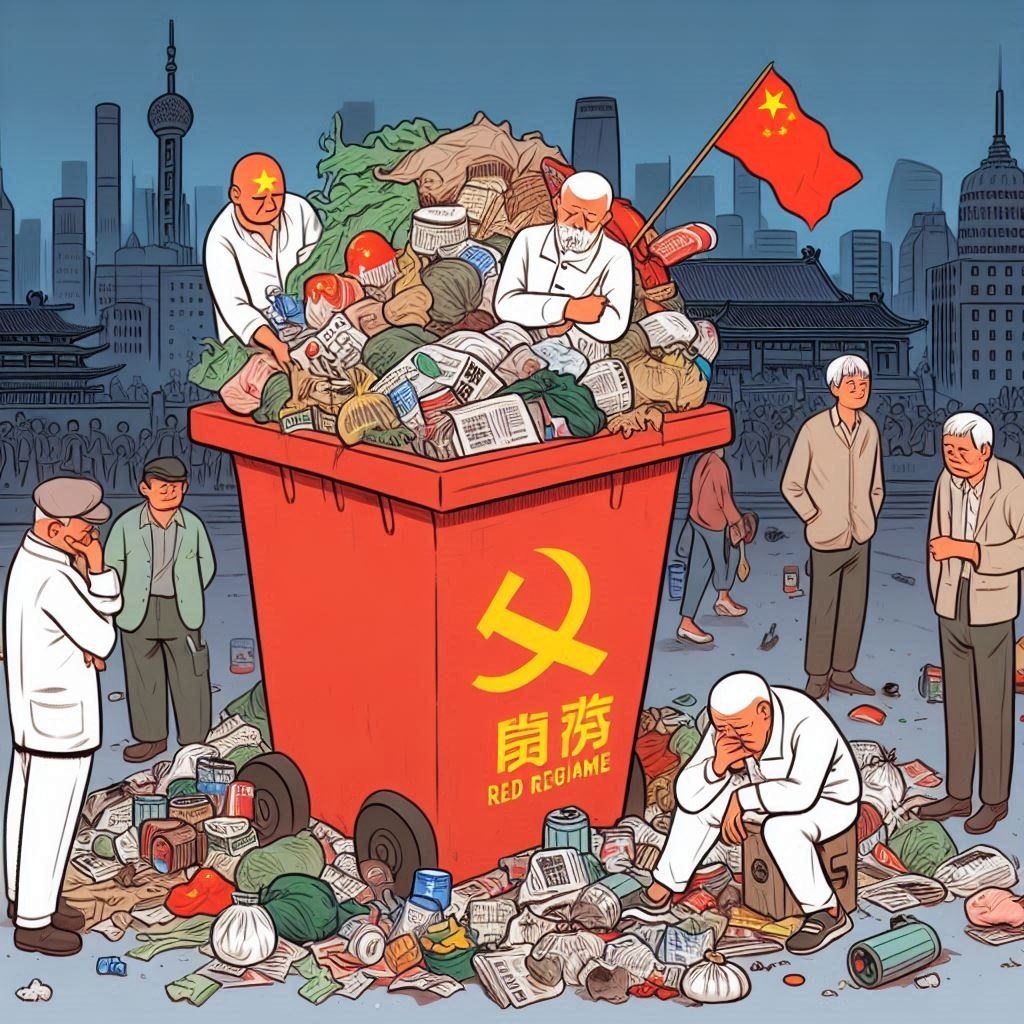
Beijing’s censors watched the supposedly academic debate unfold before reacting with alarm. After all, the online discussions about historical garbage times also referred to today’s economic slumps in China, real estate, debt, and dozens of other crises, and the reasons for the frustration and depression of an insecure youth and society. Without mentioning any names, indirect criticism of today’s Xi Jinping times flashes between the lines.
In mid-July, just before China’s Central Committee convened for its Third Reform Plenum, which was hailed as historic, and Beijing’s propaganda raved about the enthusiasm it generated among the people, bloggers countered with debates about historical garbage times and with jokes and satirical cartoons. Chat forums created “Rankings of Suffering 2024” 悲惨程度排行榜 and awarded negative stars for everything that is currently depressing China’s youth, from a lack of jobs, not enough money, home loans and debts to expensive child-rearing. Censorship has now intervened and blocked the lists.
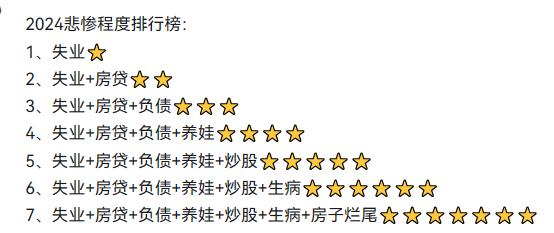
The virtual ranting has left Beijing on edge. At the end of last week, the Communist Party’s mouthpiece, Global Times, blamed foreign countries for “smearing the economy as entering the ‘garbage time of history’.” Western media are being accused of fueling pessimism, while the Third Plenum “sends a positive and warm signal not only to China but also the whole world.”
But the online discontent has home-made reasons. In mid-July, one of the first foreign journalists to express his surprise was FAZ correspondent Gustav Theile. “If you believe some of the comments on social media here, modern China has landed in historic garbage times.” Theile also noticed how the Chinese were virtually shrugging their shoulders in reaction to the increasingly poor economic mood: “It’s garbage time in China, and there’s nothing you can do.”
The British Guardian also dedicated this week’s headline to the “Garbage Time of History.” It recalled the social protests of young Chinese people three years ago and their buzzwords, such as “lying flat” and “involution.” At that time, there was a deep-seated discontent among the youth. But these were only the precursors to the current discourse.
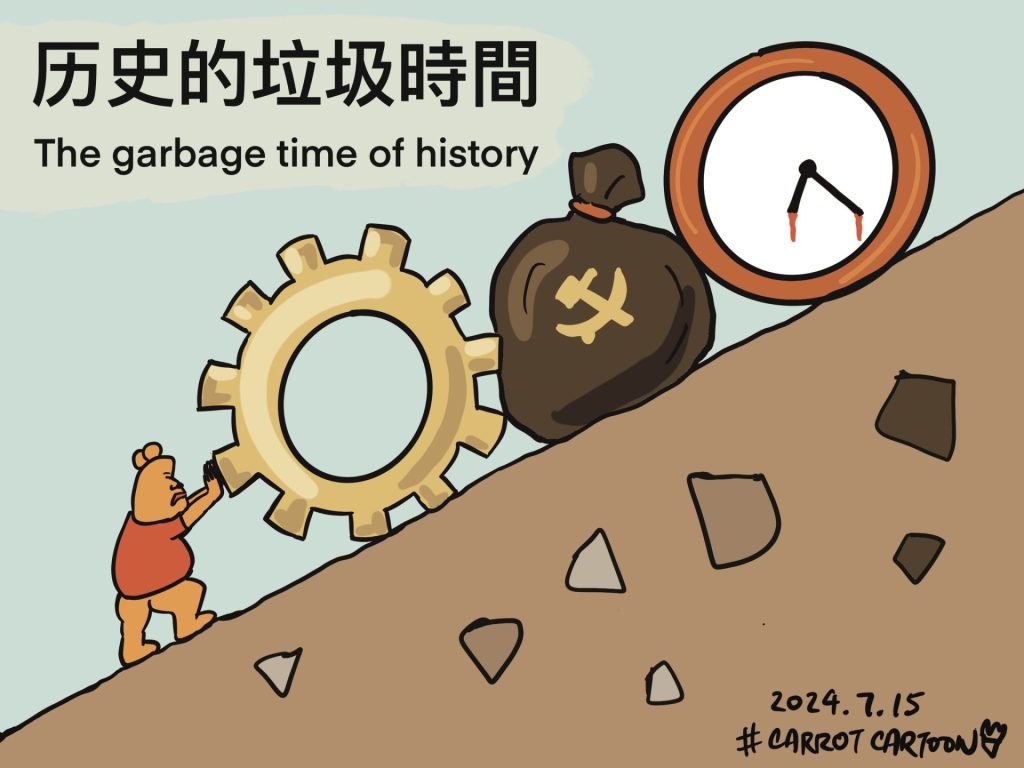
Reuters called the “historic garbage times” a “fatalistic tag.” It is a “new shorthand online for pessimism about the prospects for any turnaround for jobs, incomes and opportunity.” Reuters wrote a sober, typical British headline, as if reporting on the new Tea Time in China: “Garbage Time: China’s slump spins out new meme of economic despair.”
The new socio-political buzzword started as a loanword. It was inspired by a term from US sports reports on NBA basketball games: “Garbage time.” This term is used when a winning team takes an overwhelming lead and the coach pulls his star players from the field in the last quarter to let them rest. The rest of the game is played by second-rate replacements. The game is considered garbage time until the end. Beijing media has also used the loanword for football matches in the past.
The Cantonese essayist Hu Wenhui 胡文辉 reinvented it. He reworked it last September and used it to coin a new theory. In his essay “History’s Garbage Times – Long Vacations for Culture” 历史的垃圾时间, 文化的悠长假期, Hu interprets the rise and fall of superpowers and dynasties and found that they are usually preceded by “historical garbage times.”
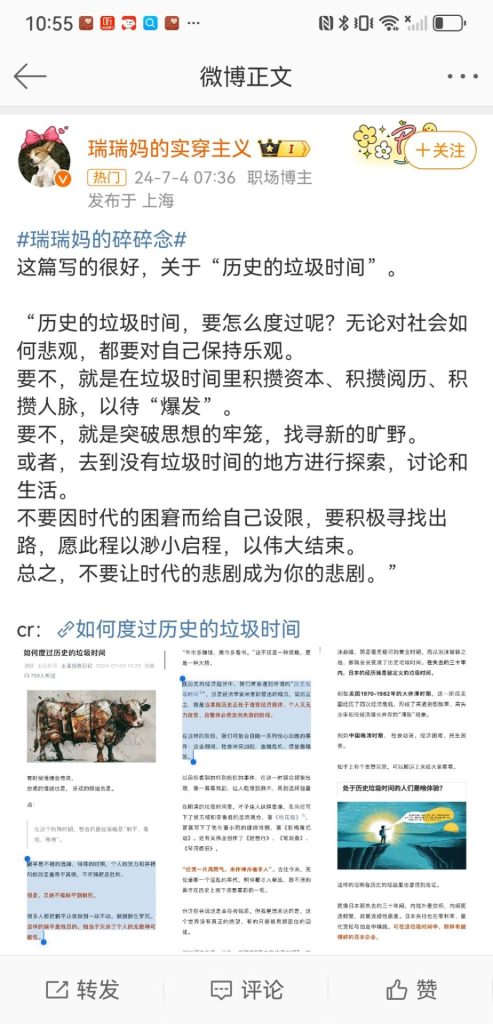
Hu’s essay made waves. Today, nine months later, even Wikipedia recently added “Garbage Time” to its catalog of new words: “After 2023, the phrase garbage time has been given a new meaning on the Chinese internet. It refers to a period when social development goes against natural rules, individuals are powerless to change, and the entire era is bound to fail.”
Hu developed his theory while studying the era of Soviet ruler Leonid Brezhnev (1964-1982). With the invasion of Afghanistan and the gradual dissolution of the Eastern Bloc, the period from 1979 to 1991 became the USSR’s “historical garbage time” – until its collapse. Gorbachev’s accession to power would only have accelerated the end.
Hu then turned to studying China’s dynasties. The garbage period began for the Zhou Dynasty after the fall of the Western Zhou in 770 BC, for the Tang Dynasty in the eighth century and the Ming Dynasty in 1587, after internal turmoil and mistakes left its economy in shambles. The following 300-year Qing dynasty never made it out of its garbage times. Hu recommends that anyone who finds themselves in a historical garbage period should follow the wisdom of Confucius: “If there is no way,” he once said, one should refuse, retreat, or simply “lie flat” 无下有道则见,无道则隐. 孔。无论是 “隐 ‘是 ‘躺平 ‘还是 ‘退出”,都可视为对垃圾时间的一种拒绝. Instead, Hu recommends a long vacation time for culture.
In the response essay in December 2023, the blogger with the pseudonym “Director Qing He” 清和社长 wrote about China’s dynasties, but also about issues of modern economic policy and development. He warned against believing that culture could escape the influence of garbage times: Could they really be used as long vacations for culture, or are they a nightmare for culture? “The first to fall in such times are cultural figures and thinkers. Criticism disappears. Adulation dominates, silence is considered subordination. In the end, only one voice remains.”
Even without mentioning any names, the academic debate is full of contemporary allusions and social and economic criticism. In June, international columnist Jennifer Zeng recognized in her blog “Inconvenient Truths” that the debate was drifting into politically critical waters.
In July, Beijing reacted swiftly and with concerted action. On its website 北京日报客户端, the Party newspaper Beijing Daily attacked the “pseudo-academic concept of historical garbage times.” It would only aim to denigrate China’s development and discourage people. Simultaneously, Wang Wen 王文, a Marxist and Dean of Finance at the People’s University, attacked the new theory as a “fraudulent academic concept.”
A Xinhua journalist became the spokesperson for the nationalist critics, mocking the online debates on a popular social media platform 明叔杂谈 as the “absurd fantasies of ignorant literati” 无知 文青. He said they belonged to a group that was deeply influenced by bourgeois liberal ideologies, they “idolize universal values” and “fantasize about transplanting them and the underlying political systems to China,” adding that Beijing must be careful not to allow “miniature Solzhenitsyns” to sprout.
Propaganda hails the recently announced new CCP resolutions as having “comprehensively reformed and opened up China’s economy and society.” They have awakened enormous initiative and enthusiasm among the masses. However, Beijing’s answer to all those who want to continue “lying flat” and discuss historic garbage times is: The empire strikes back.
Fang Hong has been appointed Ambassador of the People’s Republic of China to the Lao People’s Democratic Republic, replacing Jiang Zaidong.
Sebastian K. Kierysch has been Managing Director Operations / COO China at Montaplast since May. The Morsbach-based company produces precision plastic parts for the automotive industry. Kierysch previously worked for OPmobility as a manager in Shanghai. He now works from Suzhou.
Is something changing in your organization? Let us know at heads@table.media!

They may bloom late, but they are all the more golden: While the rapeseed blossoms brighten up spring in many parts of the country, the visually appealing oil plants in the Qilian Mountains are late to bloom. Every year in July, however, the sea of yellow stretches over dozens of kilometers. Some of these locations are up to 3,000 meters above sea level. Here, tourists admire the bright splendor in Minle County in Gansu Province.
While ordinary mortals are currently heading off on holiday, US Secretary of State Antony Blinken’s latest foreign visit is anything but relaxing. On his Asia tour, he will visit six countries in ten days. Almost more interesting than his destinations – Laos, Vietnam, Japan, the Philippines, Singapore and Mongolia – is where he is not going. Blinken skips China. And this in a week in which China has possibly facilitated an agreement between the bitter enemies Hamas and Fatah and receives the Ukrainian foreign minister for peace talks – in other words, it is fulfilling its role as a force for peace and counterpart to the USA with ever greater clout.
As Michael Radunski writes, Blinken’s trip also shows that the US Democrats are pursuing their policy in the region hand in hand with their partners – in stark contrast to the Republicans under Donald Trump: “America first” always means “allies last.” Read our analysis to find out exactly what the US delegation plans in which country.
Another conflict is emerging in research. The new giant accelerator at the CERN nuclear research center, which could be operational from the mid-2040s and will cost at least 15 billion euros, is already getting competition. It is becoming increasingly likely that China will soon want to build a similar system – and “soon” may be as early as the 2030s. Ralf Nestler has analyzed what this means for the strategy of European science and what risks researchers see on the horizon.


US Secretary of State Antony Blinken and US Secretary of Defense Lloyd Austin will travel to Asia this week. It will be Blinken’s longest Asia trip and the program is tight: six countries in ten days. Laos, Vietnam, Japan, the Philippines, Singapore and Mongolia.
Not only is the itinerary ambitious, but it also reflects the Democrats’ China policy: Together with allies and partners, they want to stand up to their great rival, China. This approach is also fundamentally different from that of the Republicans under Donald Trump. The latter hopes to negotiate a deal through direct dialogue, and allies sometimes fall by the wayside.
“We’ve prioritized creating a latticework of mutually reinforcing relationships,” says Daniel Kritenbrink, Assistant Secretary for East Asian and Pacific Affairs. The message is clear: The USA is going ‘all-in in the Indo-Pacific’ – side by side with its partners.
Numerous governments in Asia have recently expressed concern about Donald Trump’s possible election victory and the implications for America’s Asia policy. Trump openly questions the value of US alliances around the world. In his first term as president, he also proposed reducing the US military presence in Japan and South Korea or ending it altogether.
When asked last week whether he would support Taiwan in the event of a Chinese attack, Trump replied: “I think Taiwan should pay us for defense. You know, we’re no different than an insurance company. Taiwan doesn’t give us anything.” In contrast, Trump praised Chinese party and state leader Xi Jinping as a “brilliant man” at the beginning of the week.
It is Trump’s policy of “America First” and, above all, the implicit “ally last” that strengthens China’s position in the Indo-Pacific states. No government will dare to oppose China’s firm behavior if its most important ally negotiates its own deal with Beijing in a few months.
Accordingly, Blinken and Austin want to make a counterpoint with their trips. “We do try to reassure allies and partners that there are certain fundamentals I think about America’s engagement that are not going to change,” said Kritenbrink.
Vietnam is a good example of how important this approach is. Deputy Secretary of State Kurt Campbell appropriately refers to Vietnam as an Indo-Pacific “swing state” – analogous to the swing states in the upcoming US presidential election. Just as these states will be decisive in November, support for Vietnam will play an important role in the rivalry between the USA and China.
And so it is hardly surprising that Wang Huning will also be in Vietnam around the same time. He is the fourth highest-ranking member of the Standing Committee of the Politburo of the Communist Party of China. Incidentally, the official occasion for the visit is the funeral of Nguyen Phu Trong, the General Secretary of the ruling Communist Party of Vietnam.
In line with the trip’s main goal, the itinerary for the next few days is packed:
Mira Rapp-Hooper, Senior Director of the National Security Council for East Asia and Oceania, summarized this week: The aim is to create a new regional architecture to arm the Indo-Pacific against all kinds of challenges, from climate change to North Korea. From the perspective of the government in Washington, however, the biggest challenge is China.

Europe’s particle physicists are faced with a dilemma. They plan a giant accelerator at the CERN nuclear research center, which could be operational by the mid-2040s. However, the machine called FCC (Future Circular Collider) will cost at least 15 billion euros. Funding has not yet been secured. There are also growing indications that China is planning to build a similar facility in the near future and will beat the FCC to the punch. The Circular Electron Positron Collider (CEPC) could be ready for use as early as the mid-2030s and, above all, open to European researchers, at least as things stand at present. Should they seize the opportunity and save the money for the FCC?
The LHC (Large Hadron Collider) accelerator is currently in operation at CERN, which was used to discover the long-sought Higgs particle for the first time in 2012. With each test, the researchers learn more about its properties and refine their theories about the forces that keep the universe running. In the long term, they hope to have a more powerful machine. It will provide more data and possibly hints at “new physics.”
Stronger means bigger. Instead of 28 kilometers, which is the circumference of the ring-shaped LHC, the equally ring-shaped FCC requires 91 kilometers. The technical feasibility has been examined since 2021, as has the geological feasibility, given that the FCC would also be built in underground tubes. The cost estimate so far is only ballpark and stands at 15.5 billion euros. This cannot be funded from the current CERN budget, as the LHC’s research operations will continue from 2029 at a higher performance level, for which preparations are already underway.
The FCC needs additional sources of funding. There is talk of involving Switzerland and France more, as these countries benefit more from the construction – through contracts with regional companies. Another option would be for countries without CERN membership to share in the costs if they conduct research with the FCC. The USA and Japan in particular are being considered here.
“The CERN management must now clarify how the funding can be solidly secured,” says Lutz Feld from RWTH Aachen University and Chairman of the Committee for Elementary Particle Physics, which represents the German research community. It has been aware of the reluctance of the German Ministry of Education and Research and is understandable from its point of view: “As a taxpayer, I expect that investments are only made in projects whose funding has been clarified.” Feld adds that Cern has shown several times that it “is capable of such huge projects.” During the construction of the previous accelerators, “time and cost plans were adhered to.”
China has been accelerating its scientific advancement for years. This includes ideas for a large accelerator, which is also being designed as a “Higgs machine.” Now, it looks like things are getting serious. According to a Nature report, the 100-kilometer-long CEPC could be included in the next five-year plan in 2025. If the government agrees, construction could commence in 2027 and research could begin in 2035.
Such research facilities are high-tech devices at the limits of what is feasible and correspondingly attractive. After all, they produce important innovations “on the side,” such as superconductor technology, which conducts electricity almost without loss. Doubts about whether China could build such a top machine are fading. “I believe they can,” says Karl Jakobs from the University of Freiburg, who is a member of the CEPC’s International Advisory Committee and is very familiar with the concept.
The development in China and the results of the FCC feasibility study require an update to the European Strategy for Particle Physics. In 2020, relevant experts recommended building a “Higgs machine” as a successor to the LHC. Based on the new information, the experts will now consult again. “It will be very exciting,” says Jakobs, who chairs the committee. It could be that they stick with the FCC. “But it could also be that – if China builds the CEPC – CERN will be advised to shift its focus.” There are various concepts for alternative devices, including a linear accelerator called CLIC. The vote is expected to be available in two years.
Lutz Feld warns against relying solely on the Chinese accelerator. “What do we do if the Chinese government suddenly decides that no more data will be released?” he asks. “Or if China invades Taiwan and none of us can access the detectors because of the political consequences?” He says that as a scientist, he needs to be able to check the CEPC’s measurements to trust them.
Skepticism about China is widespread in the European community. According to one physicist, hardly any scientists move to the country to build a career there. You have to be very careful, they tell you that almost every day at university, says another. The international and open cooperation cultivated at CERN can hardly be imagined in China.
However, the researchers must ask themselves whether this is enough of an argument to insist on the FCC. After all, it comes with a staggering price tag, which will probably be revised upwards. Particle physicists and other basic researchers could do a lot with the money.
However, one thing to note about the decision is Europe’s leading role at CERN, both scientifically and regarding technology development. “It would be wise to retain it,” says Hans Peter Beck, a particle physicist at the University of Bern and CERN. Especially as he sees the geopolitical risk of a new ice age – regarding Russia and China; even in the USA, researchers from certain countries find it difficult to enter the country. “We physicists can only make suggestions; it’s up to politicians and society to decide what to do.”
August 1, 2024; 4 p.m. CEST (10 p.m. Beijing time)
Center for Strategic & International Studies, Webcast: Nuclear Threats and the Role of Allies: A Conversation with Acting Assistant Secretary Vipin Narang More
August 1, 2024; 5 p.m. CEST (11 p.m. Beijing time)
China.Table Toolbox / CNBW Berlin Naehkaestle, conversation (hybrid): Michael Kahn-Ackermann: Changes in Chinese society after Covid More
August 2, 2024; 8:30 a.m. Beijing time
German Chamber of Commerce – East China, Networking (in Shanghai): Executive Women in German Companies in China – WE.C.U. with Miriam Wickertsheim More
Russia and China have demonstrated a new presence in the North Pacific and the Arctic near the US border with joint flights of strategic long-range bombers. Russian Tu-95MS bombers and Chinese Xian H-6 bombers participated in patrol flights over the Chukchi Sea, the Bering Sea and the North Pacific, the Russian Ministry of Defense announced on Thursday. During the five-hour flight, the crews worked together in all phases. According to a Chinese Ministry of Defense spokesperson, the joint patrol had deepened mutual trust and coordination between the two sides. It had “nothing to do with the current international and regional situation.”
Russia has stated that no foreign airspace was violated. Nevertheless, the flight near the US state of Alaska prompted the USA and Canada to deploy fighter jets. The US and Canadian joint North American Aerospace Defense Command (NORAD) announced that fighter jets had intercepted the Russian and Chinese aircraft in the Alaskan airspace surveillance zone (Adiz), in which aircraft are required to identify themselves. The Russian and Chinese aircraft had remained in international airspace and the incident was not considered a threat. However, NORAD stated that it would continue to monitor activities in the vicinity of North America and “meet presence with presence.”
Russia and China have strengthened their military and economic cooperation in recent years. Just a few days before Russia launched its war of aggression against Ukraine in February 2022, the two countries announced that they would further strengthen their partnership, calling it borderless. Just recently, China and Russia held a joint naval exercise in the South China Sea. rtr
After years of speculation about a sale, Merck is parting with its pigments business. The German pharmaceutical and technology group announced on Thursday that it will sell the business to the Chinese manufacturer Global New Material International (GNMI) for 665 million euros. GNMI has assured the employees in Germany of extensive job guarantees and a guarantee for the plant in Gernsheim until 2032. The group intends to invest the proceeds from the sale in its core businesses.
Rumors about a sale of the pigments business, which operates under the name Surface Solutions, have been going on for several years. However, past attempts to sell the business failed during the pandemic. GNMI was last rumored to be an interested party. At the time, an agency report stated that the pigments business could be valued at almost one billion euros in the event of a deal.
Merck’s pigments business, which offers products for coatings, cosmetics and industrial applications, generated sales of 411 million euros last year. Overall, the company’s consolidated sales totaled just under 21 billion euros. The approximately 1,200 employees of the business, including around 700 in Germany, are to be transferred to GNMI as part of the transaction. The Chinese group operates the Chesir brand and is one of the largest manufacturers of pearlescent pigments. The deal is expected to be finalized over the course of next year. rtr
For the first time since taking office, Italian Prime Minister Giorgia Meloni will travel to China from Friday 26 July to 31 July to boost trade with the People’s Republic. Meloni is expected to meet Chinese President Xi Jinping and Premier Li Qiang.
Italian tire manufacturer Pirelli, energy group ENI, defense company Leonardo, wine producers and several Italian luxury fashion groups, including Dolce & Gabbana, will be among the companies invited to an Italian-Chinese business forum taking place on Sunday and Monday during Meloni’s visit to Beijing.
In 2019, Italy was the only G7 country to join China’s New Silk Road trade and infrastructure project, but withdrew from the project last year. Bilateral trade and industry agreements are expected to be signed during Meloni’s visit. rtr
China has presented an action plan to save energy and reduce CO2 emissions in the aluminum sector. The sector is responsible for over 550 million tons of CO2 (2022). In comparison: Germany generated a total of 674 million tons of CO2 in 2023.
The plan includes the following points for the aluminum sector until 2025:

For over a decade, sole ruler Xi Jinping has been shaping the fate of the People’s Republic. His four-volume magnum opus is simply called “The Governance of China.” While the rule of his great predecessors Mao Zedong and Deng Xiaoping is today dressed up as a “time of revolution” or “time of reforms,” Xi uses a more modest but overarching term for his China policy. He has it called the “new era” 新时代, a synonym for the entire period.
But on the internet, bloggers have coined a mocking and initially unnoticed alternative term for the Xi era. Hidden in a historical debate about the rise and fall of new empires such as the Soviet Union and the discussion of when China’s dynasties started to decline, the term “garbage time of history” appeared for the first time last September 历史的垃圾时间. Along with the even more hilarious recommendation: As nothing can be done about it, you should avoid it by lying flat or going on vacation.

Beijing’s censors watched the supposedly academic debate unfold before reacting with alarm. After all, the online discussions about historical garbage times also referred to today’s economic slumps in China, real estate, debt, and dozens of other crises, and the reasons for the frustration and depression of an insecure youth and society. Without mentioning any names, indirect criticism of today’s Xi Jinping times flashes between the lines.
In mid-July, just before China’s Central Committee convened for its Third Reform Plenum, which was hailed as historic, and Beijing’s propaganda raved about the enthusiasm it generated among the people, bloggers countered with debates about historical garbage times and with jokes and satirical cartoons. Chat forums created “Rankings of Suffering 2024” 悲惨程度排行榜 and awarded negative stars for everything that is currently depressing China’s youth, from a lack of jobs, not enough money, home loans and debts to expensive child-rearing. Censorship has now intervened and blocked the lists.

The virtual ranting has left Beijing on edge. At the end of last week, the Communist Party’s mouthpiece, Global Times, blamed foreign countries for “smearing the economy as entering the ‘garbage time of history’.” Western media are being accused of fueling pessimism, while the Third Plenum “sends a positive and warm signal not only to China but also the whole world.”
But the online discontent has home-made reasons. In mid-July, one of the first foreign journalists to express his surprise was FAZ correspondent Gustav Theile. “If you believe some of the comments on social media here, modern China has landed in historic garbage times.” Theile also noticed how the Chinese were virtually shrugging their shoulders in reaction to the increasingly poor economic mood: “It’s garbage time in China, and there’s nothing you can do.”
The British Guardian also dedicated this week’s headline to the “Garbage Time of History.” It recalled the social protests of young Chinese people three years ago and their buzzwords, such as “lying flat” and “involution.” At that time, there was a deep-seated discontent among the youth. But these were only the precursors to the current discourse.

Reuters called the “historic garbage times” a “fatalistic tag.” It is a “new shorthand online for pessimism about the prospects for any turnaround for jobs, incomes and opportunity.” Reuters wrote a sober, typical British headline, as if reporting on the new Tea Time in China: “Garbage Time: China’s slump spins out new meme of economic despair.”
The new socio-political buzzword started as a loanword. It was inspired by a term from US sports reports on NBA basketball games: “Garbage time.” This term is used when a winning team takes an overwhelming lead and the coach pulls his star players from the field in the last quarter to let them rest. The rest of the game is played by second-rate replacements. The game is considered garbage time until the end. Beijing media has also used the loanword for football matches in the past.
The Cantonese essayist Hu Wenhui 胡文辉 reinvented it. He reworked it last September and used it to coin a new theory. In his essay “History’s Garbage Times – Long Vacations for Culture” 历史的垃圾时间, 文化的悠长假期, Hu interprets the rise and fall of superpowers and dynasties and found that they are usually preceded by “historical garbage times.”

Hu’s essay made waves. Today, nine months later, even Wikipedia recently added “Garbage Time” to its catalog of new words: “After 2023, the phrase garbage time has been given a new meaning on the Chinese internet. It refers to a period when social development goes against natural rules, individuals are powerless to change, and the entire era is bound to fail.”
Hu developed his theory while studying the era of Soviet ruler Leonid Brezhnev (1964-1982). With the invasion of Afghanistan and the gradual dissolution of the Eastern Bloc, the period from 1979 to 1991 became the USSR’s “historical garbage time” – until its collapse. Gorbachev’s accession to power would only have accelerated the end.
Hu then turned to studying China’s dynasties. The garbage period began for the Zhou Dynasty after the fall of the Western Zhou in 770 BC, for the Tang Dynasty in the eighth century and the Ming Dynasty in 1587, after internal turmoil and mistakes left its economy in shambles. The following 300-year Qing dynasty never made it out of its garbage times. Hu recommends that anyone who finds themselves in a historical garbage period should follow the wisdom of Confucius: “If there is no way,” he once said, one should refuse, retreat, or simply “lie flat” 无下有道则见,无道则隐. 孔。无论是 “隐 ‘是 ‘躺平 ‘还是 ‘退出”,都可视为对垃圾时间的一种拒绝. Instead, Hu recommends a long vacation time for culture.
In the response essay in December 2023, the blogger with the pseudonym “Director Qing He” 清和社长 wrote about China’s dynasties, but also about issues of modern economic policy and development. He warned against believing that culture could escape the influence of garbage times: Could they really be used as long vacations for culture, or are they a nightmare for culture? “The first to fall in such times are cultural figures and thinkers. Criticism disappears. Adulation dominates, silence is considered subordination. In the end, only one voice remains.”
Even without mentioning any names, the academic debate is full of contemporary allusions and social and economic criticism. In June, international columnist Jennifer Zeng recognized in her blog “Inconvenient Truths” that the debate was drifting into politically critical waters.
In July, Beijing reacted swiftly and with concerted action. On its website 北京日报客户端, the Party newspaper Beijing Daily attacked the “pseudo-academic concept of historical garbage times.” It would only aim to denigrate China’s development and discourage people. Simultaneously, Wang Wen 王文, a Marxist and Dean of Finance at the People’s University, attacked the new theory as a “fraudulent academic concept.”
A Xinhua journalist became the spokesperson for the nationalist critics, mocking the online debates on a popular social media platform 明叔杂谈 as the “absurd fantasies of ignorant literati” 无知 文青. He said they belonged to a group that was deeply influenced by bourgeois liberal ideologies, they “idolize universal values” and “fantasize about transplanting them and the underlying political systems to China,” adding that Beijing must be careful not to allow “miniature Solzhenitsyns” to sprout.
Propaganda hails the recently announced new CCP resolutions as having “comprehensively reformed and opened up China’s economy and society.” They have awakened enormous initiative and enthusiasm among the masses. However, Beijing’s answer to all those who want to continue “lying flat” and discuss historic garbage times is: The empire strikes back.
Fang Hong has been appointed Ambassador of the People’s Republic of China to the Lao People’s Democratic Republic, replacing Jiang Zaidong.
Sebastian K. Kierysch has been Managing Director Operations / COO China at Montaplast since May. The Morsbach-based company produces precision plastic parts for the automotive industry. Kierysch previously worked for OPmobility as a manager in Shanghai. He now works from Suzhou.
Is something changing in your organization? Let us know at heads@table.media!

They may bloom late, but they are all the more golden: While the rapeseed blossoms brighten up spring in many parts of the country, the visually appealing oil plants in the Qilian Mountains are late to bloom. Every year in July, however, the sea of yellow stretches over dozens of kilometers. Some of these locations are up to 3,000 meters above sea level. Here, tourists admire the bright splendor in Minle County in Gansu Province.
